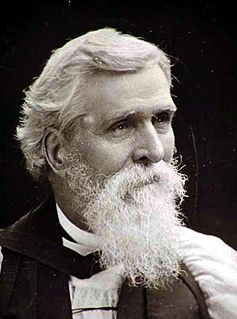
Robert Caldwell was a missionary for London Missionary Society. He arrived in India at age 24, studied the local language to spread the word of Bible in a vernacular language, studies that led him to author a text on comparative grammar of the South Indian languages. In his book, Caldwell proposed that there are Dravidian words in the Hebrew of the Old Testament, the archaic Greek language, and the places named by Ptolemy.
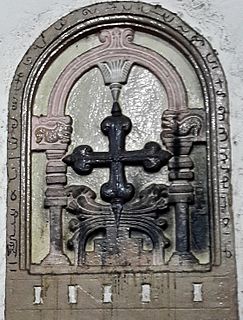
Christianity is India's third-largest religion after Hinduism and Islam, with approximately 27.8 million followers, constituting 2.3 percent of India's population .According to the tradition of Indian Christians, Jesus Christ was introduced to India through Thomas the Apostle, who is said to have reached the Malabar Coast (Kerala) in 52 AD. According to another tradition Bartholomew the Apostle is credited with simultaneously introducing Christianity along the Konkan Coast. There is a general scholarly consensus that Christian communities were firmly established in the Malabar Coast (Kerala) of India by the 6th century AD, which were communities who used Syriac liturgies. Starting from European colonisations from 15th century several Western Christian communities like Latin Rite Catholics and Protestants were created in different parts of the country.
Paravar is a Tamil caste in Tamil Nadu, India and Sri Lanka. They are thought of being in ancient times coastal inhabitants, seafarers, maritime traders, who as well were according to at least one modern writer, described as "ferocious soldiers", claiming to be Kshatriyas. There are many theories as to their origins but they have since ancient times been recorded in the area of Tamil Nadu and Sri Lanka
Protestants in India are a minority and a sub-section of Christians in India and also to a certain extent the Christians in Pakistan before the Partition of India, that adhere to some or all of the doctrines of Protestantism. Protestants in India are a small minority in a predominantly Hindu country, but form majorities in the north-eastern states of Meghalaya, Mizoram, Nagaland and sizeable minorities in Kerala, Tamil Nadu and various east coast and northern states. Protestants today trace their heritage back through a rich history of Christian and monotheistic faith on the Indian subcontinent.

The Malankara Church, also called the Puthenkoor, refers to the collection of West Syriac Indian apostolic Churches, according to tradition, that claims ultimate origins from the missions of Thomas the Apostle in the 1st century in India and were under the leadership of Marthoma I after the historical Coonan Cross Oath of 1653. All the Churches belonging to the Malankara patrimony follow the Antiochian Syriac Rite liturgy. The word "Malankara" is a combination of two words, 'Mala' which means mountains and 'Kara' which means land surface; and refers to the state of Kerala in India.

Johann Philipp Fabricius was a German Christian missionary and a Tamil scholar in the later part of his life. He arrived in South India in 1740 to take charge of a small Tamil Lutheran congregation in Madras and expanded it during his stay. During his time in Madras he wrote several Christian hymns in Tamil and published the first Tamil to English Dictionary. Of his works his translation of the Bible to Tamil is considered to be most noteworthy.
Stephen Charles Neill (1900–1984) was an Irish Anglican missionary, bishop, and scholar. He was proficient in a number of languages, including Greek, Latin and Tamil. He went to Trinity College, Cambridge and was a fellow there before going as a missionary to Tamil Nadu, in British India, and became bishop of Tirunelveli in 1939.

Reverend Charles Theophilus Ewald Rhenius - The Apostle of Tirunelveli was a German born missionary of the Church Mission Society (CMS). He was the first CMS missionary to arrive at India. For his missionary work in the Tirunelveli district he came to be known as the "Apostle of Tirunelveli". He was involved in the attempt to revise the Fabricius version of the Tamil Bible and also published a Tamil grammar book. Rhenius’ split from the Anglican Church in 1830 and started his own congregation. Rhenius' work was recognized in 1980 by the Reverend Daniel Abraham, the then Church of South India (CSI) bishop of Tirunelveli diocese. Rhenius's work was given official recognition by the Anglican Communion during the Tirunelveli diocese bicentenary celebration in 1980, in which, all the bishops, including Anglican bishop Stephen Neill and all the presbyters took an oath in front of the tomb of Rev Rhenius to follow the path of the resting soul, regard to evangelism.

Megnanapuram (Neduvilai) lies in the southern side of Thoothukudi district, at about 10 km east of Sattankulam and 11 km south of Nazareth. It is also known as Meignanapuram. Udangudi is the nearest town. The nearest railway is Nazareth Railway Station. It is served by Tuticorin Airport. By road, it is accessible from Tirunelveli, Tuticorin and Nagercoil.

Christianity in the state of Tamil Nadu, India is the second largest religion in the state. According to tradition, St. Thomas, one of the twelve apostles, landed in Malabar Coast in 52 CE. In the colonial age many Portuguese, Dutch, British and Italian Christians came to Tamil Nadu. Priests accompanied them not only to minister the colonisers but also to spread the Christian faith among the non-Christians in Tamil Nadu. Currently, Christians are a minority community comprising 6% of the total population. Christians are mainly concentrated in the southern districts of Tamil Nadu - Kanyakumari, Thoothukudi and Tirunelveli.
Friends Missionary Prayer Band (FMPB) is a missionary movement of Indian Christians. Through the work of Indian missionaries, over 1150 churches have been established, with over 6600 congregations.
Arumai Nayakam Sattampillai (1823–1918), known popularly as Arumainayagam Sattampillai, Arumainayagam, Sattampillai or Suttampillai, a Tamilian convert of Anglican church, was a catechist and the founder of first indigenous and independent Hindu Church of Lord Jesus, rejecting Western missionaries domination for the first time in the history of Indian subcontinent. This subversion paved the way for the development of a fusion model of Hindu-Christian religion, free from European missionary interference and also inspired the Indian national movement, largely centred on Bengal and Madras Presidency to fight against Western-dominated institutionalized church leading to separation of Christ from Church and Indianization of Christianity: to express and interpret Christianity and Biblical text in Indian context, socially, culturally, and religiously.
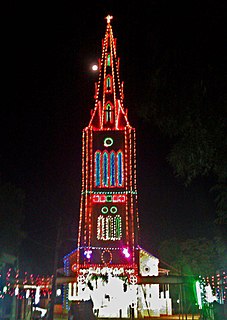
Anbinnagaram is a small village of Tuticorin district in Sattankulam Taluk, South Indian state of Tamil Nadu. established by Rev. C. T. E. Rhenius Panchayet: Mudalur Population : 613 as per 2011 census. whole village people have been following Christianity. One small river named 'Karumeni aaru' passes through East side of this village.
The Diocese of Tirunelveli is one among the 24 dioceses of the Church of South India (CSI).It is based at Tirunelveli, in the state of Tamil Nadu, southern India. The diocese has 687 churches, 101 pastors, and a membership of 1,86,000.Holy Trinity Cathedral, at Palayamkottai is the Cathedral of Tirunelveli Diocese. The churches were established by church missionary society (CMS) missionaries and Society for propagating gospel (SPG) missionaries. In the year of 1919 Tinnevely Diocese Trust Association (TDTA)was formed by uniting both mission and also with baptists and presbyterians churches in the neighbourhood.
The Church Missionary Society in India was a branch organisation established by the Church Missionary Society (CMS), which was founded in Britain in 1799 under the name the Society for Missions to Africa and the East, as a mission society working with the Anglican Communion, other Protestants, and Orthodox Christians around the world. In 1812, the British organization was renamed the Church Missionary Society.
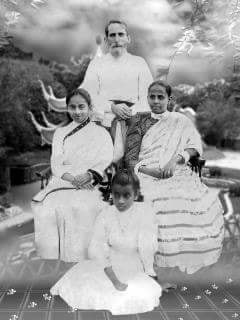
Benjamin Henry Arthur Margoschis was a Protestant Christian missionary in India. He served the Society for the Propagation of the Gospel in Foreign Parts (SPG) as an overseas missionary in India. The inhabitants of Nazareth, a small town in Tamil Nadu, called him the "Father of Nazareth" and Margoschis Aiyar. Aiyar means clergyman in the native language. Reverend Margoschis was responsible for the development of the small town of Nazareth, which is situated at the southern part of Tamil Nadu, India.
Rasa Clorinda was an Indian philanthropist, founder of a church in Tirunelveli.

Saint Thomas Anglicans are the Saint Thomas Christian members of the Church of South India; the self-governing South Indian province of the Anglican Communion. They are among the several different ecclesiastical communities that splintered out of the once undivided Saint Thomas Christians; an ancient Christian community whose origins goes back to the first century missionary activities of Saint Thomas the Apostle, in the present-day South Indian state of Kerala. The Apostle, as legend has it, arrived in Malankara in AD 52.
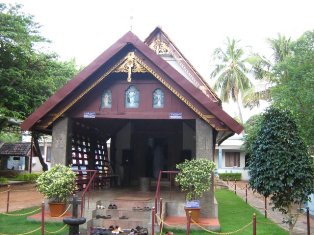
Christianity in Kanyakumari district is its second largest religion. The Catholic Church has about 400,000 followers, while the Protestant groups have about 200,000 members. Currently, Christians are a minority community in Kanyakumari District comprising 46% of the population.











